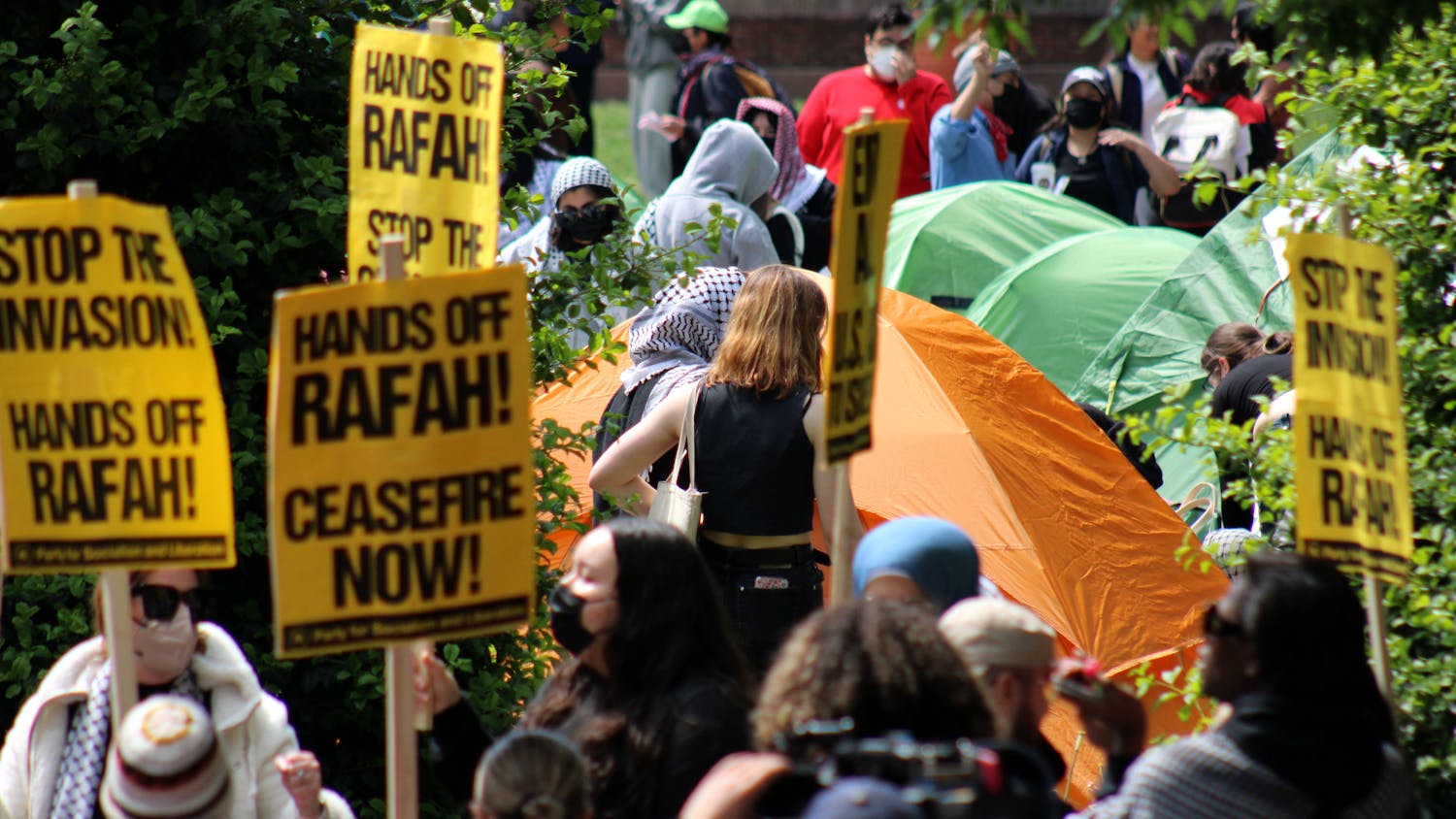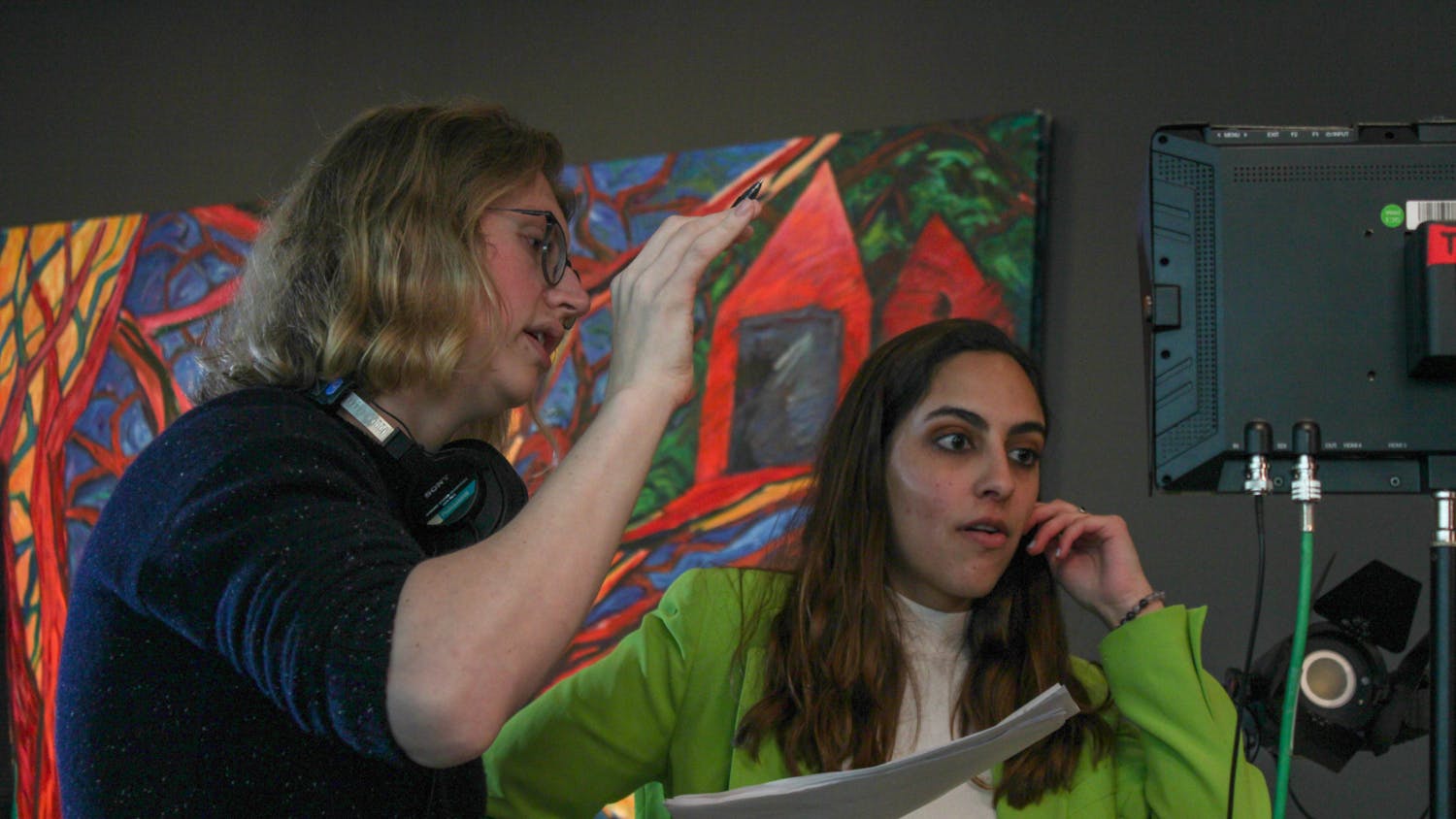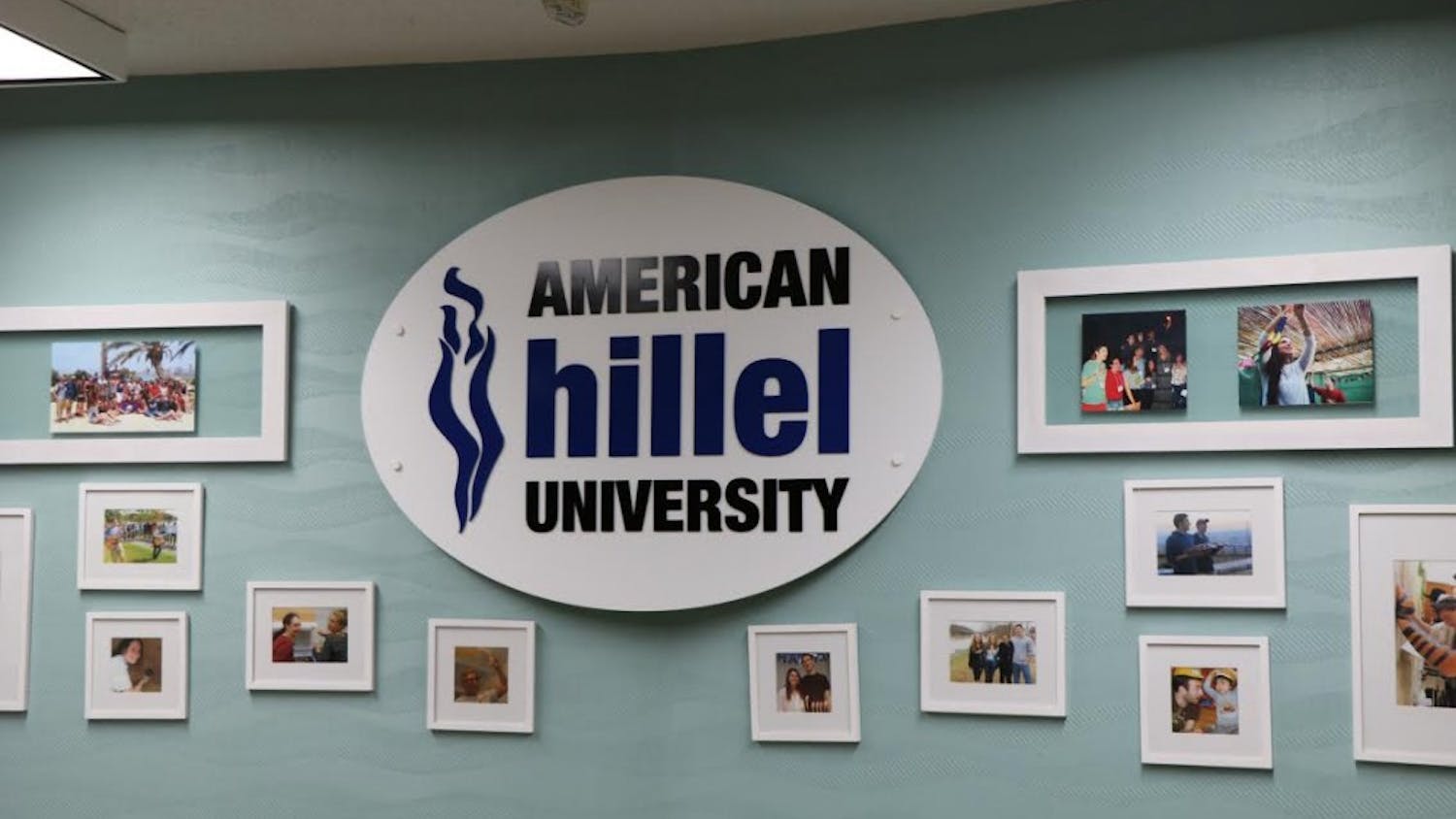Some students find it difficult to juggle schoolwork, a social life and sleep. Thirty-three AU students also add a commitment to the U.S. Army into the equation.
Erika Trapp, a senior in the School of International Service, feels around in the dark to turn off her alarm each morning. She recites radio call signs to herself as she puts on her Army combat uniform. She’s ready for her day at Quantico, and as the platoon leader for the Hoya Battalion, she prays none of her cadets get lost during training.
Trapp is one of the 33 students involved in ROTC at AU. On Oct. 24, students from local college ROTC programs joined Trapp and rose before the sun.
The college-based officer training program is offered at 273 universities throughout the United States. The Hoya Battalion ROTC, which includes students from AU, Georgetown University, George Washington University and The Catholic University of America, began in 1791 and has commissioned more than 4,100 officers since then.
“In the army every uniformed service member is a soldier, it’s a title that we all share,” Captain Matthew Jung, the junior class instructor, said. “When you enlist in the army, you’re agreeing [to serve] for a period of time, starting off at the lowest ranks.”
Jung said students strive to earn the title of commissioned officers, and programs like ROTC help cadets develop the skills necessary for that role. Those who enlist immediately after high school enter the military as non commissioned officers in the lowest rank.
Three times a week, the cadets attend physical training sessions. This training takes place Tuesday, Wednesday and Thursday from 6:15 a.m. to 7:30 a.m, either at Georgetown or in Bender Arena. Physical training is designed to keep the cadets in shape and build relationships with one another, according to a few of the cadets.
Training at Quantico
Labs immerse ROTC members in a field environment, allowing them to learn leadership skills and problem solving techniques which can be applied in the Army, in school and in life. The Oct. 24 lab followed a strict schedule, beginning at 8:25 a.m. and ending at 7:10 p.m. The cadets were told to bring snacks of their choice and two water jugs, with instructions to refill often. Each cadet also had two MREs, or meals ready to eat. MREs include a meal, snacks and a pack that heats with water to heat the food. I tried “Chicken Fajita,” after repeatedly hearing it was the best. It tasted better than it looked, but that is not saying much..
The lab began with land navigation, in which the senior cadets gave the younger members a map, a compass and six points they should find. The first and second-year cadets worked in groups to find each point and had to find three points in order to pass before completing that portion of the lab. The third-year cadets traveled alone to find each point. The fourth-year cadets helped the first and second-year cadets on their journies through the woods.
“You see your friends above you get commissioned and get deployed, and that’s when the reality sets in that this is something so much more than us.”
- Erika Trapp, senior
To prepare for their navigation practice, the cadets counted how many steps it took them to travel 100 meters. With that information, they could conclude how many steps it would take them to get to their destinations. I shadowed cadets Jax Gordon, Andrew Remavich and Max Yturraspe and their senior instructor, Cadet Edinboro throughout their journey into the woods. They all worked together, helping each other, and me at one point, when I stood, frozen, over a steep hill that lead to a stream they expected me to jump over.
ROTC in the classroom and in life
Lieutenant Colonel Patrick Donahue, the head of the program and a professor of Military Science, teaches a class all ROTC students are required to take at Georgetown. He told me he strives to help shape future leaders through ROTC.
“My parents always had us watch the news while we were little, so I remember 9/11,” Cadet Trapp, the platoon leader for the Hoya Battalion, said. “My mom is an Air Force vet, and my dad did federal law enforcement. That kind of sense of service was always ingrained [in me] but never expected.”
Tyler Knarr, the cadet battalion commander for the Hoya Battalion, grew up reading books about different army issues.
“I developed my value system off of what I read in those books,” Cadet Knarr said. “So, I knew that I wanted to be one of those people in the future, and that has guided me since I was 11 years old.”
Trapp, like the many other cadets I spoke to, said the best part of ROTC lies in the camaraderie of a community of people who strive to make each other better people.
“I walked on to ROTC freshman year,” Trapp said. “I miserably failed my first PT test, but I got an instant family. My mom always said the military’s a family, but you’re not going to know until you’re in it. My mentor, the old PL, would drive me to Georgetown for extra PT and taught me twice a week and would help me in the gym everyday. I maxed the next PT test—a perfect score. I got the flu my freshman year, and I had an upperclassman checking on me everyday. They didn’t have to do that ,and no one told them to do that, but they did it.”
Trapp added that missions such as the navigation challenge may seem like they’re only catering to the cadets interested in infantry, but the skills learned throughout these missions, such as problem solving and communication, are important in anything you do in life.
“As the commanding general said when she visited, you have this box and before you can think outside the box you have to build the box,” Knarr said. “The army likes to give you lists of things on how to think. You have to learn your military decision making process, and once you have that you can apply it to different parts of your life.”
For me, the lab experience revealed not only a part of AU I hadn’t seen before, but a foreign and often misunderstood part of society as well. I was privileged to witness a group of people continually support one another. While their reasons for joining are complex, and military issues controversial, the sense of camaraderie among ROTC members is unmistakable.
“Along the way of the four years you may take it for granted and say, ‘oh my goodness I have to wake up for PT again,’ but then you see the big moments,” Trapp said. “You see your friends above you get commissioned and get deployed, and that’s when the reality sets in that this is something so much more than us.”




